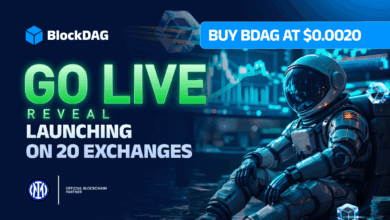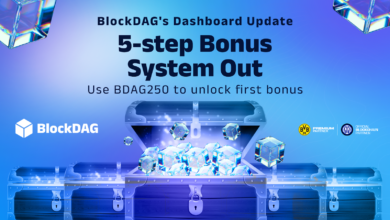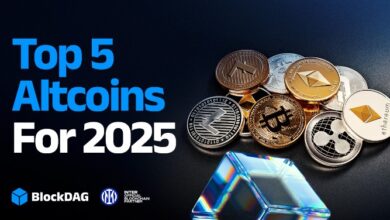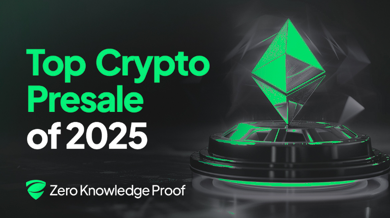
Cardano’s Vision for 2030: A Comprehensive Roadmap for Blockchain Innovation
In a revealing conversation with Big Pey, a prominent figure in the Cardano community, Fergie from Input Output Global’s (IOG) research division unveiled Cardano’s extensive roadmap stretching up to 2030. This ambitious plan encompasses nine research domains and 34 workstreams, positioning Cardano as a frontrunner in blockchain technology. The roadmap aims to support global-scale decentralized applications, introduce advanced tokenomics, and ensure post-quantum resilience.
The Multi-Year Research Agenda
This long-term research initiative, open for community input, is designed to work in tandem with Voltaire-era governance. Its primary goal is to achieve groundbreaking advancements in protocol design, scalability, interoperability, and security. Fergie elaborated, “The proposal available for community discussion and debate outlines a one-year program, which forms a part of a larger five-year vision for Cardano.”
The Core of Cardano: Ouroboros Mega and Leios
At the core of Cardano’s roadmap is Ouroboros Mega, heralded as the ultimate upgrade in Cardano’s consensus protocol lineage. Building upon previous iterations like Classic, Praos, and Genesis, Ouroboros Mega comprises seven specialized workstreams to enhance Cardano’s settlement speed, fairness, and resilience.
These workstreams include Peras for expedited settlement, Leios to boost throughput, equitable transaction processing for smaller stake pool operators (SPOs), Byzantine-resilient networking, multi-resource consensus, proof of useful work, congestion control, and sharding. Fergie emphasized, “These capabilities are crucial for strengthening the protocol, ensuring it is faster, fairer, and more secure.”
Ouroboros research, dating back to 2015, boasts over 3,000 academic citations. IOG regards Mega as the culmination of years of protocol development. “This work has propelled a market cap of tens of billions of dollars. It truly illustrates the impact of research,” Fergie commented.
Leios: Paving the Way for Global Adoption
Leios, one of the most eagerly anticipated innovations, focuses on achieving the throughput increases necessary for global adoption. While specific technical details remain confidential, Leios is transitioning from research to prototyping. “Our objective is to enhance throughput, allowing more blocks to be processed quickly, thus scaling the Cardano network,” Fergie confirmed, adding that full development might take another year or two.
Leios is among six innovation streams prioritized for accelerated development. These include anti-grinding security measures, fast BFT for partner chain finality, recursive SNARKs aggregation (OurSnark), and Proof of Restake to bolster consensus mechanisms.
Quantum Readiness and Global Expansion
IOG’s roadmap also addresses long-term technological threats and opportunities, such as the advent of quantum computing. A dedicated post-quantum research area is included, driven by significant developments from industry giants like Google and Microsoft. Fergie noted, “Every time there’s a major announcement from Google or Microsoft, we receive a surge of interest in those quantum workstreams.”
Zero-knowledge capabilities form another pillar of the plan. “We have strategic projects around ZK-Labs, Halo 2, and other zero-knowledge proof applications,” Fergie added. These initiatives aim to enhance privacy, scalability, and verification efficiency across Cardano’s ecosystem.
The roadmap envisions Cardano as a “world operating system” for decentralized applications and digital governance, extending beyond financial applications. Tokenomics, global identity, and democracy research are vital components of the plan, reflecting the network’s ambition to support digital nation-states and on-chain democratic systems.
Fergie warned, “Tokenomics is still very under-researched. The tokenomics within Cardano requires foundational research to establish a sustainable path for the next 10 to 20 years.”
A Prolific Blockchain Research Network
IOG asserts that its blockchain research network is the largest and most prolific in the industry, with 238 academic papers published to date, 50 of which have been foundational to Cardano’s development. “Last year, we produced 37 papers involving 77 researchers and attended 25 leading academic conferences,” Fergie stated.
The research network comprises in-house experts, embedded academics at global universities, and specialized blockchain labs in Edinburgh, Tokyo, and Wyoming. Collaborations extend to Stanford and over a dozen institutions worldwide. “Based on these metrics, we argue that we’re the leading blockchain research group worldwide,” Fergie claimed.
The 2030 vision is currently under review by the Intersect Product Committee, with a proposed budget covering 20 research and six innovation streams for Work Program 2025. “We’re mindful that Voltaire introduces new decentralized governance challenges, especially around budget approvals. The 2025 budget is likely to be signed in Q2 but could be delayed,” Fergie admitted.
The Importance of Decentralized Governance
Despite the complexities, IOG emphasizes that the transition to decentralized governance is crucial. “It’s more important to do things right and well than to rush these processes,” Fergie stated.
With the research proposal live on Intersect’s forums and research working group pages, IOG is actively seeking community input. “We’re inviting discussion, feedback, and criticism. We know we don’t do everything as well as we could, and we’re open to improving,” Fergie stated.







